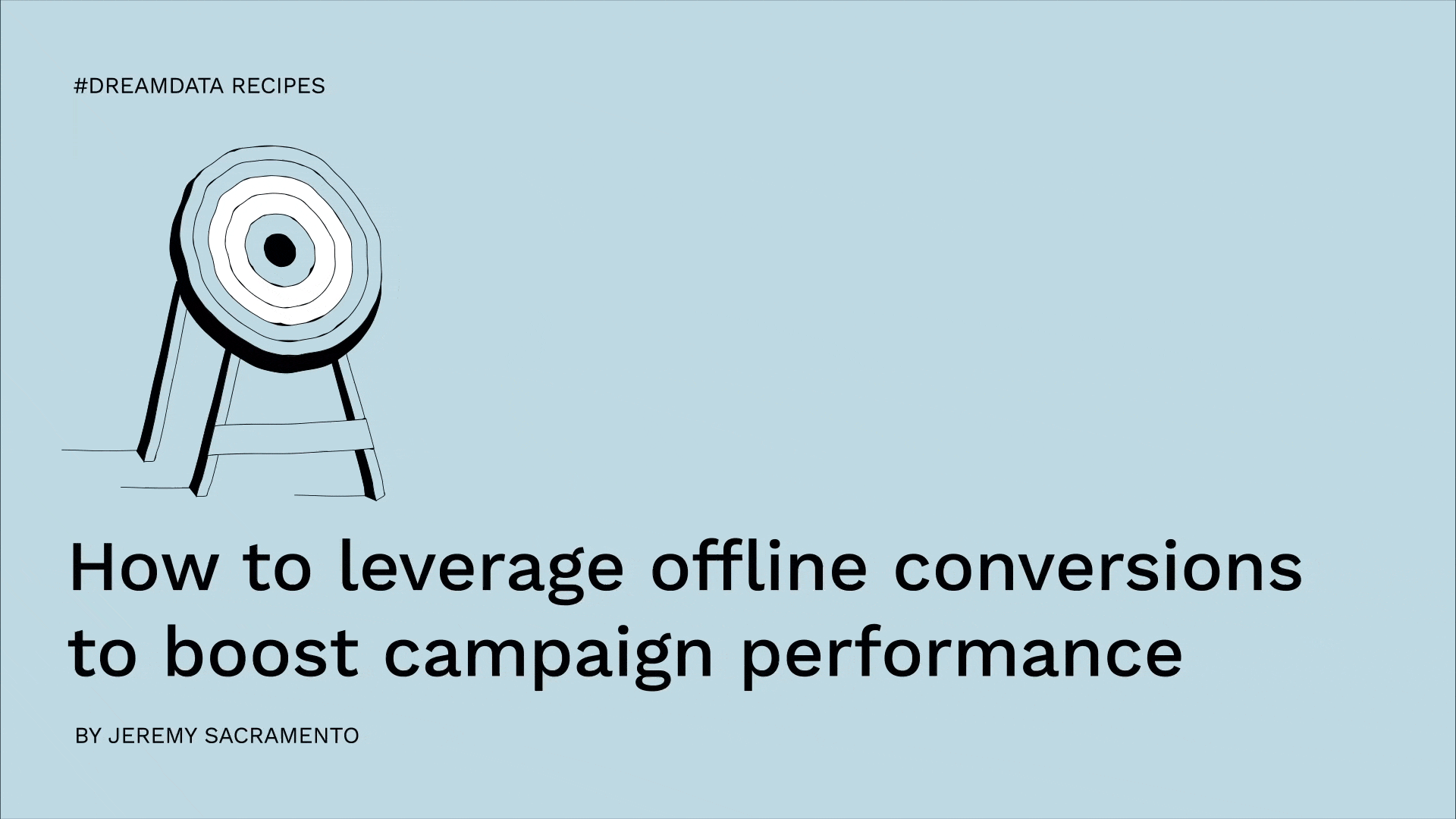#dreamdatarecipes
How to leverage offline conversions to boost campaign performance
Ad platforms’ algorithms rely on conversion data to optimise targeting and generate lookalike audiences.
Yet, the tracked conversions are not always the ones we want. Sure, someone may have requested a demo. But that lead may be disqualified outright before even entering the sales funnel.
The result is suboptimal ad performance.
Ideally, you’d want the ad platform’s algorithm to be considering just those conversions that made it through to the sales funnel, i.e “qualified”. AND, in most cases, the highest value audience.
To capture these qualified or ‘offline’ (i.e. outside the ad platform) conversions you need to have end-to-end customer journey data tracking. And you need to be able to feed that data back into the ad platform through Reverse ETL.
Here’s how you can do this:
Step 1: Track customer data and discover the highest-value segment
Start by making sure you’ve set up integrations with all the relevant tools in your B2B go-to-market tech stack. This enables Dreamdata to collect and transform most, if not all, recordable customer journey data and connect it to revenue.
From this, you’ll be able to identify two elements that can help the ad platform algorithm optimise for the highest value audience, namely:
Qualified leads - the leads that make it onto the Sales pipeline - beyond the initial conversion.
Highest value leads - the segments that close the largest deals.
Step 2: Set up access to your Dreamdata data in your warehouse
Dreamdata offers free access to the go-to-market data models to Business tier users.
By default at Dreamdata we build your database on Google BigQuery - see instructions on setting up access here.
However, through our Google Cloud Storage integration, you can easily connect the raw dataset of your Dreamdata database to:
Amazon S3 and then on to Redshift.
Another cloud container and then to Snowflake.
Once you’ve got your access, you’re ready to push the data back to the relevant platforms using Reverse ETL.
Step 3: Reverse ETL your data to the ad platforms and see your campaign’s performance improve
So with a Reverse ETL tool and a simple SQL query you can extract exactly the segment data (based on those qualified ‘offline’ conversions and lead value) you want the ad platform to process.
Find out more about using Dreamdata and Hightouch here.
Video: How Gorgias leverages offline conversions to boost their campaign performance
(Transcript)
When you want to optimize your ad campaign, you can leverage offline conversion and it's really useful in the B2B ecosystem, because most of the time, you don't want to send back to Google or Facebook or LinkedIn, the unqualified conversion, meaning people who sign up to your product, but that are not qualified, because the algorithm will optimize the targeting based on those kind of people and create like lookalike audiences.
What you want is to send back only the qualified conversions. For us, we have a couple of people sign up on the website, people, working for Squarespace stores, people working for Shopify stores. We only want to send back the conversion when someone working for Shopify. So basically what we do is we use our Reverse ETL Hightouch to push back the data directly within Google or Facebook or whatever, and in a really simple way with a SQL query.
That's the first step. The second step is about optimizing your campaign for value. That's where Dreamdata makes a lot of sense for us, because we have designed an inhouse lead-scoring model or account-scoring model that allows us to predict the value of a given deal from the moment someone books a demo or starts up a trial, even before he discussed it with the AE. What we do is, with Dreamdata, we are able in real time to say, okay, this conversion represents X percent of the deal value. You are the last click of the whole customer journey. So for a deal of 10 K created, we won't send back like 10K as value. We will send like three, four, five K maybe.
We are able to say to Google, okay, if you want to optimize for the value, please take a look at those kind of people considering the whole journey. So you are not skewing the data with like a lucky deal that you've been able to generate from like one campaign. So Google will optimize based on that. That's really useful for us to optimize based on the value, considering the holistic journey and not just like get a view of, okay, there is one touch point that has generated this.


